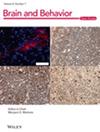This extensive literature review investigates the relationship between post-traumatic stress disorder (PTSD) and alcohol use disorder (AUD), focusing on the neurobiological changes associated with their co-occurrence. Given that these disorders frequently coexist, we analyze mechanisms through which alcohol serves as a coping strategy for PTSD symptoms, particularly highlighting the drinking-to-cope self-medication model, which suggests that alcohol use exacerbates PTSD symptoms and complicates recovery.
A systematic literature search was conducted across multiple databases, including PubMed and Google Scholar, to identify studies examining the intersection of the biopsychosocial model with PTSD, AUD, and associated neural alterations.
Findings demonstrate that chronic PTSD is associated with progressive dysfunction in the amygdala, hippocampus, prefrontal cortex, hypothalamic–pituitary–adrenal axis, and white matter pathways. Also, our findings underscore alterations within the reward system, prefrontal cortex, hippocampus, amygdala, basal ganglia, and hypothalamic–pituitary–adrenal axis that contribute to the pathophysiology of AUD. Our results support the notion that a biopsychosocial framework is essential for contemporary addiction treatment, particularly in the context of alcohol addiction and PTSD.
PTSD frequently leads individuals to use alcohol as a maladaptive coping strategy, ultimately resulting in neuroadaptive alterations across critical brain regions. These neurobiological changes contribute to the development and maintenance of AUD. The findings reiterate the necessity of employing a biopsychosocial model in treating individuals grappling with both PTSD and AUD. This model allows for a comprehensive understanding of the unique challenges faced by this population, integrating biological, psychological, and social factors that influence recovery.



